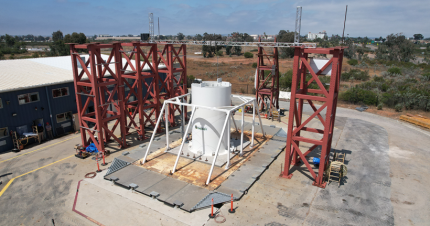
The US Department of Energy (DOE) has completed seismic testing on a pair of full-scale dry storage systems for used nuclear fuel. Data from this test will be used to better understand the potential impacts earthquakes have on fuel that is stored at more than 70 reactors sites across the US.
The test included a full-scale vertical cask weighing 125 tonnes and a 111-tonne horizontal storage system. Both were equipped with dummy fuel assemblies and more than 240 sensors to collect data on roughly 40 different seismic simulations.
Researchers conducted tests at the University of California San Diego using a specialised outdoor shake table to simulate various seismic events.
The results will be used to evaluate the impacts of potential seismic events on used fuel cladding and inform the design and licensing of future storage systems. It will also help to improve current practices and ensure the safe, efficient, and sustainable management of US used fuel. The tests were funded by the DOE Office of Nuclear Energy’s Spent Fuel and High-Level Waste Disposition programme.
“Building public trust through transparent and rigorous testing is a key objective of this initiative,” said Paul Murray, Deputy Assistant Secretary for Spent Nuclear Fuel and High-Level Waste Disposition. “These tests have yielded valuable data on the performance of spent nuclear fuel storage systems during seismic events. The insights gained are essential for ensuring the safety and integrity of these systems, which is crucial for long-term storage solutions.”.






